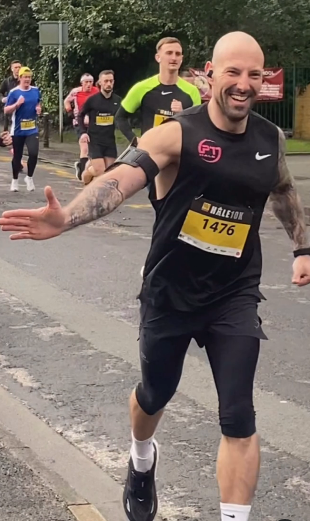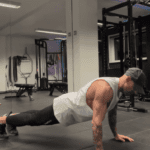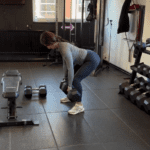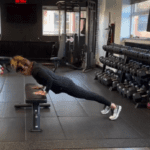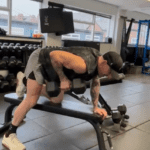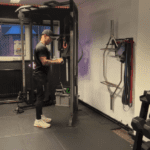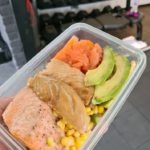It is certainly race season at the moment (see Chris and Charlotte at a recent 10k) and strength training is an essential component of a comprehensive training program for a 10k race. It helps to improve muscle strength, stability and resilience, which can reduce the risk of injury and improve running efficiency. Key muscle groups to focus on include the quadriceps, hamstrings, glutes and core.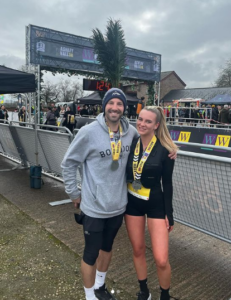 Effective exercises for building lower body strength are squats, lunges, deadlifts and calf raises. For core strength, planks, bridges and Russian twists are beneficial. It is recommended to include strength training sessions 2-3 times per week to complement running workouts. Strength training exercises could include:
Effective exercises for building lower body strength are squats, lunges, deadlifts and calf raises. For core strength, planks, bridges and Russian twists are beneficial. It is recommended to include strength training sessions 2-3 times per week to complement running workouts. Strength training exercises could include:
- Squat variations: Squats, including bodyweight squats, goblet squats, dumbbell/barbell front and back squats build strength in the thighs, glutes and legs, which contributes to overall power and running efficiency.
- Deadlift variations: Deadlifts such as kettleblell sumo deadlifts, Romanian deadlifts, trap bar deadlifts and conventional barbell deadlifts strengthen the posterior chain (glutes, hamstrings, calves, upper back) and provide support for the knee and hip joints.
- Split squat/lunge variations: Single-leg exercises like split squats, rear foot elevated split squats and forward/reverse/side lunges improve core and hip stability, which can help prevent running-related injuries.
- Kettlebell swings: Kettlebell swings develop hip explosiveness and overall power, whilst being less taxing on the joints compared to other exercises.
- Prowler pushes: Prowler pushes mimic the lower body mechanics of running, with less stress on the joints, helping to improve strength, power and conditioning.
These strength training exercises target the key muscle groups used in running and can help improve running economy, efficiency, and injury prevention when incorporated into a 10k training program.
Running drills are crucial for improving running form, efficiency and speed. They can include high knees, butt kicks, and strides, which help to enhance neuromuscular coordination and running mechanics. Additionally, incorporating interval training, tempo runs and long runs into the training schedule can help build endurance and speed. For example, a build-up workout sequence leading to a 10k race might consist of 6 x 1 mile repeats at goal 10k pace, progressing to 2 x 2 miles + 2 x 1 mile and culminating in 3 x 2 miles at goal pace.
Nutrition plays a vital role in supporting training and recovery. For a 10k race, it is recommended to consume 6-7g of carbohydrates per kg of body weight per day and 1.2g of protein per kg of body weight per day. The night before the race, a balanced meal with complex carbohydrates, lean protein, and healthy fats is advised. On race day, a pre-race snack consisting mostly of simple carbohydrates, such as a banana with nut butter or a piece of toast with jam, can help top off glycogen stores. Hydration is also key, with the goal of achieving pale yellow urine.
Injury prevention, or ‘pre-hab’, is about minimising the risk of injury through proactive measures. This includes getting adequate sleep, planning for rest and recovery, incorporating strength training, and having a body management program that may involve self-massage, stretching and control work. It is also important to train smartly, avoiding overtraining and including a variety of training intensities. Proper running form, replacing worn-out shoes, and listening to the body’s signals are additional strategies to prevent injuries.
In summary, training for a 10k involves a multifaceted approach that includes strength training, running drills, nutrition and injury prevention – each aspect plays a critical role in preparing the body for the demands of the race and ensuring peak performance on race day.
A personal trainer is an investment in your health and well-being that can lead to long-term positive effects on your fitness, confidence, and overall health. PT Hale prides itself on being a social and safe space where you can workout individually, or with like-minded people to get the results that you want and deserve – LET’S GO!

